Don’t Let Rodents Invade Your Home or Business!
Scratching in the walls? Droppings in the pantry? Missing pet food? If you are noticing these telltale signs, chances are you have some unwanted furry guests making themselves at home. Rodents may be small, but they can cause big problems—chewing through wires, contaminating food, and even carrying diseases. Whether you are dealing with sneaky mice, burrowing rats, or an ongoing infestation, we have the tools and expertise to kick them to the curb for good!
Contact our amazing team today and reclaim your space—rodent free!
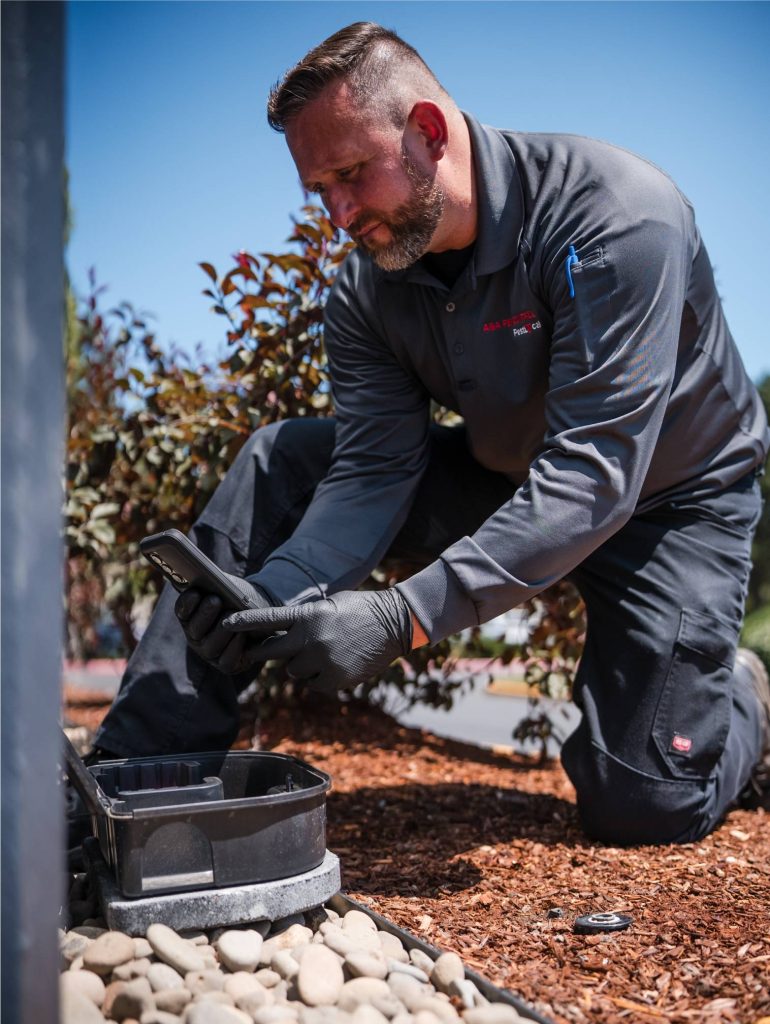
Rodent Control & Prevention
Rodents are highly adaptable survivors, capable of thriving in almost any environment alongside humans. Their ability to squeeze through tiny openings, reproduce rapidly, and exploit even the smallest food sources makes them a persistent challenge. Successfully managing a rodent infestation requires a strategic, multi-step approach that not only removes active populations but also fortifies your home or business against future invasions.
Comprehensive Site Inspection
Our expert technicians begin with a detailed inspection of your property to identify areas of rodent activity and nesting sites, possible entry points into your home or business and environmental and safety concerns that may contribute to infestations. This thorough assessment allows us to develop a targeted plan to eliminate rodents and prevent them from entering your property.
Effective Rodent Exclusion & Removal
Once we identify how rodents are gaining access to your structure, we implement exclusion techniques to block their entry points. Our process includes:
- Sealing Gaps & Entry Points – Using hardware cloth, steel wool, and other durable materials, we close off access points to prevent future infestations.
- Strategic Trap Placement – Traps are placed in crawlspaces, attics, basements, and other discreet areas to quickly eliminate any rodents inside.
- Exterior Rodent Control – Tamper-resistant rodent stations are installed around the property to reduce outdoor rodent populations and prevent them from re-entering.
This multi-step approach ensures that rodents are effectively removed and kept out for good!
Ongoing Prevention & Monitoring Services
Rodents are persistent—they constantly search for new entry points, burrow under foundations, and chew through siding. This is why we recommend ongoing prevention services, including:
- Exterior Bait Stations – Helps keep rodent populations in check and prevents reinfestation
- Routine Inspections – Identifies new vulnerabilities before they become major issues
- Interior Monitoring – Ensures that your home or business remains rodent-free over time
Our comprehensive rodent control program is designed to eliminate current infestations and prevent future problems, giving you peace of mind that your home or business remains rodent-free.
Expert Rodent Control Services
Rodents are among the most persistent and destructive pests, posing serious health risks and causing costly structural damage. They can chew through wiring, contaminate food, and create entry points for other pests, making infestations even more problematic. Fortunately, our comprehensive rodent control solutions are designed to eliminate existing infestations and safeguard your property against future invasions.
- Quarterly & Bi-Monthly Programs
- Target Pests: Ants, spiders and various other crawling insects
-
Service Includes:
- Exterior perimeter inspection and application for crawling insect control
- Removal of accessible wasp nests on the structure of your home
- Sweeping of spider webs followed by an overhead application for spider control
- Interior services as needed
- Quarterly & Bi-Monthly Programs
- Target Pests: Rats, mice, ants, spiders and various other crawling insects.
Service Includes:
- Exterior perimeter inspection and application for crawling insect control
- Removal of accessible wasp nests on the structure of your home
- Sweeping of spider webs followed by an overhead application for spider control
- Service exterior rodent bait stations and inspect for potential entry points
- Interior services as needed
- Quarterly & Bi-Monthly Programs.
- Target Pests: Rats & Mice.
-
Service Includes:
- Exterior perimeter inspection for potential entry points, nesting areas or food sources.
- Seal up identified entry points to prevent the rodents from accesses the interior of your home.
- Service exterior and interior rodent bait stations.
- Interior services as needed.
Identification
Identifying Common Rodents in Oregon and Washington
Oregon and Washington are home to several rodent species, but the ones most frequently found invading homes and businesses include:
- Roof Rats – Agile climbers that prefer attics, rafters, and upper levels of structures
- Norway Rats – Larger burrowing rodents that typically nest in basements, crawlspaces, and ground-level areas
- House Mice – Small and adaptable, these mice are commonly found in kitchens, walls, and storage areas
- Deer Mice – Known for their bi-colored fur, these rodents often inhabit garages, sheds, and rural properties
Each species has unique behaviors and nesting preferences, making proper identification crucial for effective control.
The two most common types of rats we encounter in Oregon and Washington are the Norway Rat and Roof Rat:
Roof Rats: Agile Climbers & Elusive Invaders
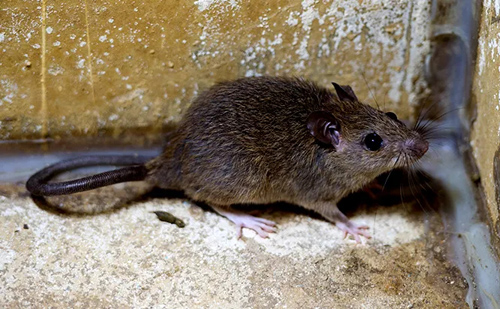 Also known as black rats, ship rats, tree rats, or climbing rats, roof rats are frequently spotted scurrying along power lines, fence tops, and rooftops. These rodents are expert climbers and jumpers, with agility comparable to squirrels, allowing them to easily access attics, rafters, and elevated nesting sites.
Also known as black rats, ship rats, tree rats, or climbing rats, roof rats are frequently spotted scurrying along power lines, fence tops, and rooftops. These rodents are expert climbers and jumpers, with agility comparable to squirrels, allowing them to easily access attics, rafters, and elevated nesting sites.
How to Identify Roof Rats:
- Sleek, slender body with a pointed snout
- Large, overdeveloped ears that stand out from their head
- A long, scaly tail that extends longer than their body
- Dark brown to black fur, lighter on the belly
Behavior & Weaknesses:
- Keen Senses: Roof rats have exceptionally strong hearing, touch, taste, and smell, making them highly aware of their surroundings.
- Nocturnal & Secretive: Due to their poor eyesight, they avoid open spaces and are most active at night, preferring to travel along covered pathways.
- Climbing Masters: They can scale walls, climb trees, and leap between surfaces with ease, making traditional ground-based rodent control less effective.
Because of their elusive nature and nesting habits in high places, professional rodent control and exclusion strategies are essential for effectively managing roof rat infestations.
Norway Rats: Large, Burrowing Invaders
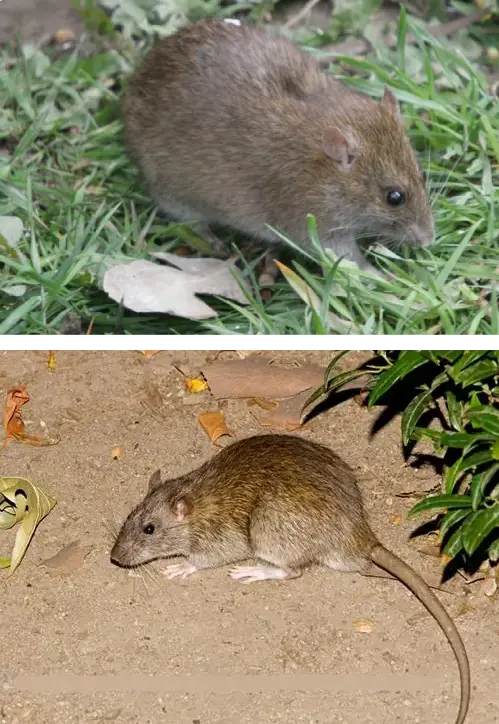 Also known as brown rats, sewer rats, common rats, house rats, or wharf rats, Norway rats are among the largest rodents that infest homes and businesses in Western Washington. Unlike their agile roof-dwelling counterparts, Norway rats are strong diggers that prefer ground-level nesting sites, often burrowing under foundations, crawlspaces, and along exterior walls.
Also known as brown rats, sewer rats, common rats, house rats, or wharf rats, Norway rats are among the largest rodents that infest homes and businesses in Western Washington. Unlike their agile roof-dwelling counterparts, Norway rats are strong diggers that prefer ground-level nesting sites, often burrowing under foundations, crawlspaces, and along exterior walls.
How to Identify Norway Rats:
- Stocky, round body with a blunt snout
- Small ears that sit close to the head
- Broad, scaly tail that is equal to or shorter than their body
- Brownish-gray fur with a lighter underbelly
- Can grow up to 18 inches long (nose to tail) and weigh up to 1 pound
Behavior & Habits:
- Ground Dwellers & Expert Burrowers: Unlike roof rats, Norway rats are not strong climbers and tend to nest at ground level or below, burrowing into soil, basements, and crawlspaces.
- Nocturnal & Cautious: They are most active at night and avoid unfamiliar objects, making them more difficult to trap initially.
- Highly Destructive: Norway rats can gnaw through wood, plastic, and even soft metals, causing costly damage to homes and businesses.
Due to their rapid reproduction and destructive habits, a Norway rat infestation can escalate quickly.
Mice: Small but Rapidly Multiplying Pests
Mice may be small, but they are prolific breeders and can quickly turn a minor issue into a full-blown infestation. Their ability to reproduce year-round makes them one of the most persistent pests in homes and businesses.
Mice Traits & Behaviors:
- Rapid Reproduction – A single female can have 5-6 pups (babies) every 19-22 days.
- Fast Maturity – Newborn mice reach sexual maturity in just 6-10 weeks and can become pregnant immediately after giving birth, allowing populations to explode in a short time.
- Versatile Feeders – Mice have broad dietary preferences and obtain most of their moisture needs from their food, allowing them to survive in various environments.
- Nibblers by Nature – Unlike rats, which are more cautious, mice are naturally curious and tend to nibble on many different food sources, making them easier to trap when using the right approach.
Because mice breed so rapidly and adapt quickly to their surroundings, early intervention is key.
Common Mice Species in Oregon and Washington
House Mice and Deer Mice are the most common mice found, learn how to identify what species you are dealing with:
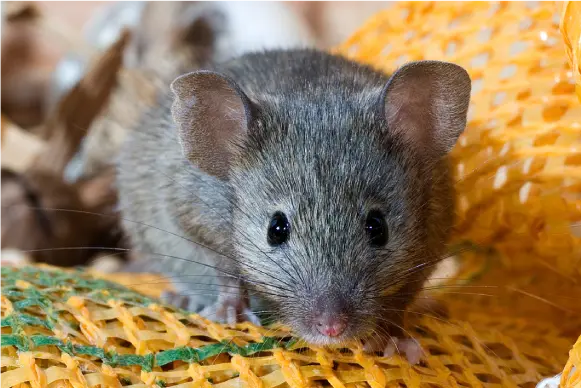 House Mice: The Most Common Indoor Invaders
House Mice: The Most Common Indoor Invaders
House mice are one of the most frequently encountered rodents in urban and suburban areas, thriving in homes, businesses, and other man-made structures. Their small size and adaptability allow them to easily sneak indoors in search of food, warmth, and shelter.
How to Identify House Mice:
- Small body (typically 2.5-4 inches long, not including the tail)
- Pointed snout with prominent whiskers
- Large, rounded ears relative to body size
- Black, protruding eyes
- Thin, hairless tail as long as or longer than the body
Due to their ability to squeeze through openings as small as a dime, house mice can quickly establish hidden nests inside walls, attics, and storage areas.
Deer Mice: A Growing Concern in All Environments
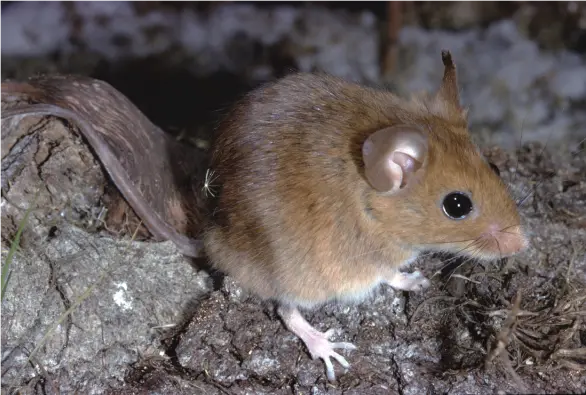 While traditionally found in rural areas, deer mice have increasingly been spotted in suburban and even urban settings in recent years. They share similarities with house mice but have distinct markings that set them apart.
While traditionally found in rural areas, deer mice have increasingly been spotted in suburban and even urban settings in recent years. They share similarities with house mice but have distinct markings that set them apart.
How to Identify Deer Mice:
- White feet and a white underside
- Long, slightly furry tail with a white underside
- Brown to grayish-brown fur on the upper body
- Similar in size to house mice but with more distinct two-tone coloring
Health Risks & Concerns:
⚠️ Primary carriers of Hantavirus, a serious respiratory disease transmitted through rodent droppings, urine, and saliva
⚠️ Frequently found in garages, sheds, barns, and outbuildings, but can also invade homes through small openings
Because deer mice are known carriers of Hantavirus, proper cleanup and professional rodent control are essential to reduce exposure risks.
Risks
The Risks of a Rodent Infestation
Rodents are more than just a nuisance—they pose serious health risks and can cause extensive structural damage to homes and businesses. Rats and mice are known carriers of dangerous diseases, including Hantavirus, Salmonella, Leptospirosis, Rat-Bite Fever and Plague
Beyond health concerns, rodents can severely damage insulation, vapor barriers, and HVAC systems by chewing through materials and leaving behind contaminated droppings and urine. In some cases, they have been linked to house fires due to their tendency to gnaw on electrical wiring, making their presence a significant safety hazard.
Common Rodent Behaviors & Why They Keep Coming Back
🐀 Neophobic by Nature – Rats are wary of new objects in their environment, which can make them hesitant to interact with traps or bait stations at first. This natural caution often requires a strategic approach to effective rodent control.
🐀 Creatures of Habit – Once rodents establish familiar routes and hiding spots, they will continue to use the same paths, seek food in the same locations, and rely on established water sources. This repetitive behavior makes prevention just as important as elimination.
🐀 Attracted to Warmth & Shelter – Rodents lose a lot of body heat through their tails, which makes homes, garages, attics, appliances, crawlspaces, decks, and even vehicles ideal hiding places—especially in cooler months.
🐀 A Community-Wide Issue – Even if we eliminate rodents inside your home or business, there may always be rodent populations in the surrounding area. Properties with available water sources, food access, and protective harborage (such as dense vegetation or storage areas) will continue to attract rodents year-round.
Because rodents are persistent, long-term prevention is key. Our expert rodent control services don’t just eliminate infestations—we help secure your home or business against future invasions with exclusion techniques, monitoring, and ongoing prevention plans.
Rodent Control Methods
Our rodent control program is designed to eliminate active infestations and implement long-term prevention to stop future rodent activity. Because rodents are persistent and highly adaptable, effective control requires a multi-step approach that focuses on elimination, exclusion, and ongoing monitoring.
 Comprehensive Rodent Inspection
Comprehensive Rodent Inspection
A successful rodent control strategy starts with a detailed inspection of your property to identify:
- Entry points rodents are using to access your home or business
- Nesting sites where they are hiding and reproducing
- Feeding areas and food sources sustaining their population
- Travel paths commonly used by rodents inside and outside the structure
Interior Rodent Control
To eliminate rodents already inside the structure, we take a systematic and strategic approach by:
- Placing rodent traps in discreet, high-activity areas to capture remaining rodents
- Sealing identified entry points to cut off access and prevent new rodents from getting in
- Driving rodents toward the traps by securing all potential escape routes
Exterior Rodent Control
Rodent activity outside your home or business must also be managed to prevent reinfestation. Our exterior control measures include:
- Installing tamper-resistant, weatherproof rodent bait stations to reduce the outdoor population
- Addressing conducive conditions such as overgrown vegetation, food sources, and harborage areas
- Conducting a follow-up visit within 5-10 days to check traps, remove any captured rodents, and ensure exclusion work is holding up
Ongoing Prevention & Monitoring
Even after an infestation is under control, rodent activity in surrounding areas continues year-round. Because rodents follow scent trails and pheromone markers, they will continue to probe for entry points unless preventative measures are in place. We strongly recommend:
✔ Recurring exterior monitoring and baiting to keep outdoor populations in check
✔ Regular inspections to identify and address any new vulnerabilities
✔ Ongoing exclusion efforts to reinforce rodent-proofing as structures shift and wear over time
Rodents are adaptable survivors, but with a proactive prevention plan, you can keep them from returning. Contact us today to schedule your rodent inspection and secure your home or business!
Prevention Tips
Proactive Rodent Prevention Tips
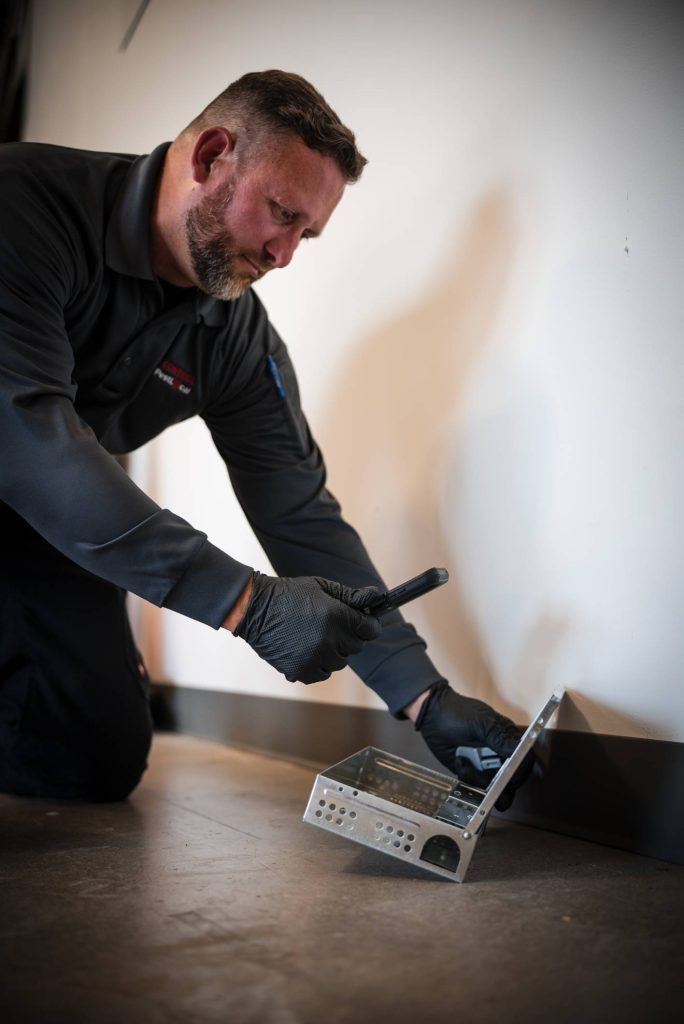 While no prevention method is foolproof, taking proactive steps can make your home or business less attractive to rodents and significantly reduce the risk of an infestation. Implementing these strategies will also make rodent control easier and more effective if an issue does arise.
While no prevention method is foolproof, taking proactive steps can make your home or business less attractive to rodents and significantly reduce the risk of an infestation. Implementing these strategies will also make rodent control easier and more effective if an issue does arise.
Maintain Proper Sanitation – Rodents are drawn to readily available food and waste, so keeping your space clean is key:
- Keep garbage cans securely covered and dispose of waste regularly
- Clean up fallen fruits, vegetables, and pet food from yards and outdoor areas
- Sanitize food preparation areas frequently to remove crumbs and spills
Eliminate Clutter & Hiding Spots – Rodents thrive in cluttered spaces, which provide them with excellent nesting sites:
- Organize storage areas and eliminate piles of unused items
- Avoid stacking wood, cardboard, or debris near the home
- Keep garages, attics, and basements tidy to reduce nesting opportunities
Control Food Sources – If rodents can easily find food, they’ll keep coming back. Take these steps to limit their access:
- Store all food in airtight containers, including pet food and dry goods
- Remove uneaten pet food promptly rather than leaving it out overnight
- Place bird feeders away from the home, as spilled seeds attract rodents
Maintain Landscaping & Foliage – Rodents use overgrown vegetation as cover to reach your home undetected:
- Trim bushes and tree branches at least 1 foot away from structures
- Keep grass cut short and remove dense ground cover near foundations
- Ensure that crawlspace vents and foundation gaps are sealed properly
Inspect & Seal Entry Points Regularly – Mice can squeeze through openings as small as a dime, and rats as small as a quarter:
- Check for gaps, cracks, and openings around doors, vents, and pipes
- Seal entry points with durable materials like steel wool, caulk, or hardware cloth
- Schedule professional rodent inspections for early detection and prevention
By staying proactive and vigilant, you can keep rodents out of your home or business before they become a major issue.

